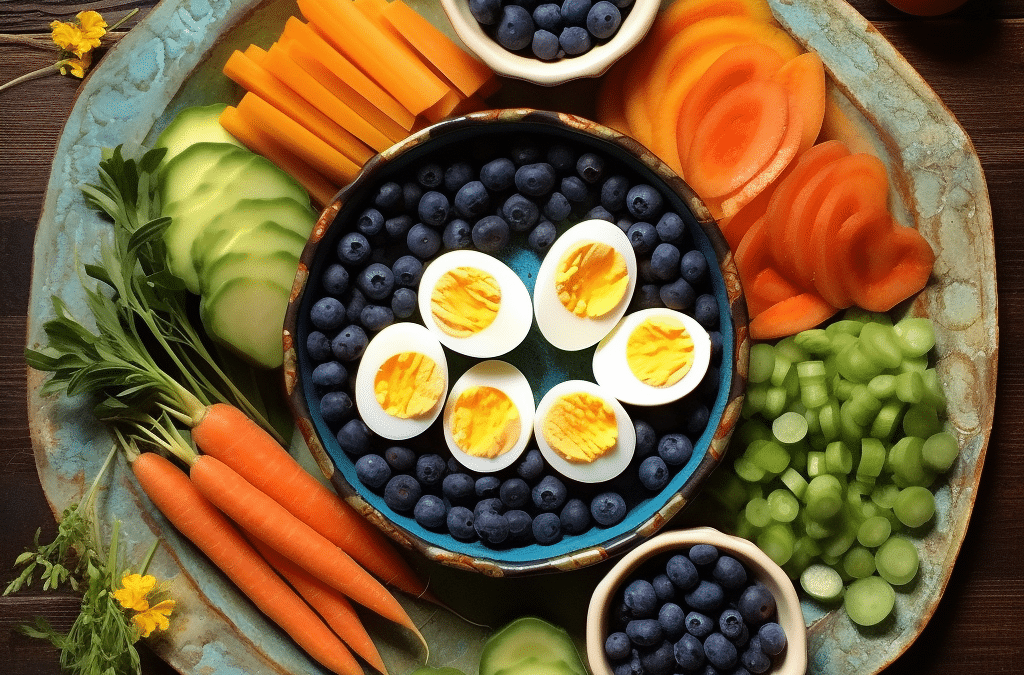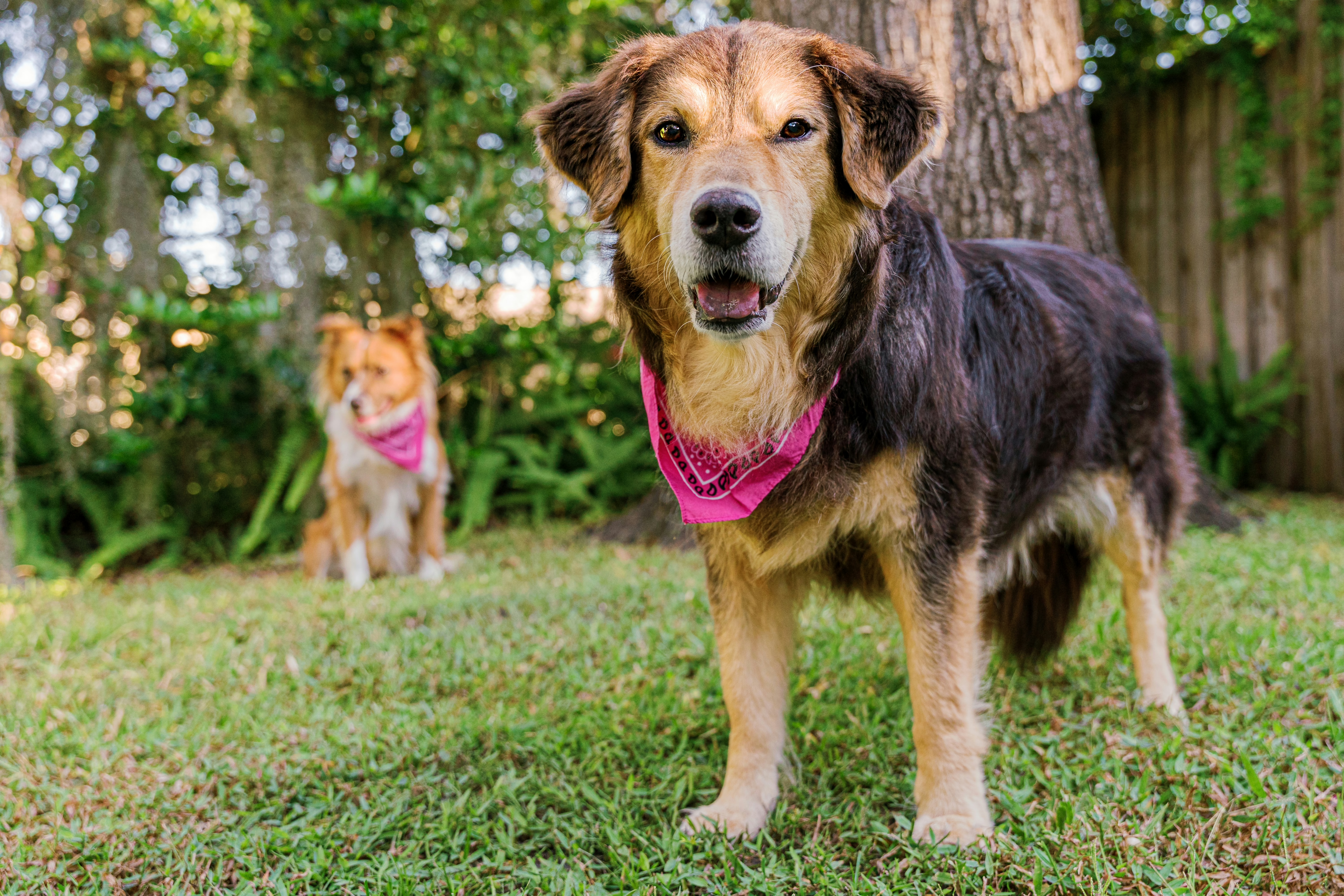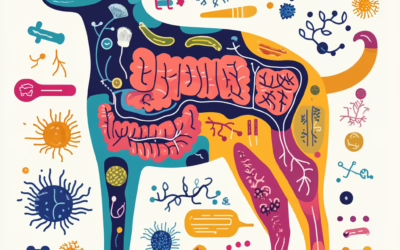10 People Foods That Dogs Can Eat for Fun & Nutrition
Introduction
Dog owners know the familiar sight of their furry friend begging with those irresistible eyes at the dinner table. While it’s easy to assume that what’s good for us might be good for our pets, this isn’t always the case. However, the good news is that many foods we humans enjoy are safe for dogs and can provide them with a burst of nutritional goodness. From antioxidant-rich fruits to lean proteins, a plethora of ‘people food’ can offer a fun variety to our canine companions while giving them a nutritional boost. In this blog, we’ll dive into 10 human foods that are dog-approved and how to safely incorporate them into their diet. Let’s embark on this tasty journey together!
Carrots: The Crunchy Delight
Carrots are more than just a staple in human diets; they’re also a fantastic addition to your dog’s menu. This vibrant orange vegetable is jam-packed with many vitamins and minerals that can greatly benefit our canine friends. Notably, carrots are a significant source of beta-carotene, which converts to vitamin A in the body – vital for good vision, growth, and immune function.
But the benefits don’t stop at vitamins. Carrots are also abundant in fiber, which aids in promoting a healthy digestive system. Their natural crunchiness can be great for your dog’s oral health, acting as a natural toothbrush to help reduce plaque build-up.
Serving Ideas
Looking for ways to introduce this veggie to your furry friend? Carrots can be a delightful crunchy treat when served raw. If your dog is new to carrots, offer them a thin slice or a baby carrot to gauge their interest. For those pups who love a mealtime mix, try shredding some carrots and blending them into their regular food. It adds a burst of color, texture, and nutrition. Whether as a mid-day snack or a dinner mix-in, carrots can be a refreshing and healthful addition to your dog’s diet. Just remember, like with all treats, moderation is key!
Blueberries: Nature’s Tiny Powerhouses

Often hailed as a superfood for humans, blueberries are equally beneficial for our four-legged pals. These small, round, and delightfully sweet berries are brimming with antioxidants, which play a crucial role in neutralizing free radicals in the body. Free radicals can cause cellular damage, so feeding your dog antioxidant-rich foods like blueberries can improve their overall health and longevity.
In addition to their antioxidant properties, blueberries are a potent source of essential vitamins, particularly vitamin C and vitamin K. These nutrients support the immune system and aid in maintaining healthy skin and coat.
Serving Ideas
Introducing blueberries to your dog’s diet can be fun and rewarding. These berries can serve as a low-calorie, nutritious treat for training sessions. Each time your furry friend masters a command or showcases good behavior, pop them a blueberry as a token of appreciation. The natural sweetness is often a hit among dogs!
For those sweltering summer days, consider freezing blueberries. They transform into cool, refreshing snacks that help your dog beat the heat and provide a fun chewing experience. Plus, the added bonus of watching your pup’s playful attempts at chasing a rolling berry will surely make you smile!
Incorporating blueberries into your dog’s diet can be a delightful way to provide them with a nutritional boost while giving them a treat they’ll eagerly await.
Pumpkin: The Orange Superfood for Pups
When we think of pumpkins, our minds might drift to autumnal decorations and pies, but this vibrant orange squash offers a trove of health benefits for dogs. Pumpkin is an exceptional source of dietary fiber, making it a go-to for many pet owners when their fur-babies experience digestive issues. Whether it’s upset stomach, diarrhea, or constipation, a bit of pumpkin can help regulate their system.
Beyond its digestive merits, pumpkin contains vitamin A, essential for vision health, skin maintenance, and immune function. However, it’s essential to note that while vitamin A is beneficial, it should be given in the right amounts, so always ensure you’re not overfeeding pumpkin to your pet.
Serving Ideas
Canned pumpkin is a convenient option if you want to introduce pumpkin to your dog’s diet. But, this is crucial, always choose plain canned pumpkin, not pumpkin pie filling. The latter contains sugars and spices that aren’t suitable for dogs. You can easily mix a spoonful of this wholesome puree into their regular meals. Its rich flavor is often a hit, making mealtime something to look forward to.
Are you feeling a bit creative? Why not bake some homemade dog treats infused with pumpkin goodness? Countless easy recipes online combine pumpkin with other dog-friendly ingredients, resulting in treats that not only pack a nutritional punch but also have tails wagging in delight.
Whether as a dietary supplement or a tasty treat, pumpkin is a versatile and healthful addition to your dog’s menu, truly deserving of its superfood status in the canine world.
Sweet Potatoes: A Sweet Deal for Canine Health
Sweet potatoes are more than a tasty side dish on our dining tables. Our canine companions serve as a nutritional powerhouse, bringing along a suite of benefits. Rich in a spectrum of vitamins like A, C, and E, these tubers support a range of bodily functions, from vision and immune health to skin vitality and antioxidant protection.
Vitamin A, in particular, is known for its role in maintaining healthy vision and skin, while vitamins C and E act as antioxidants, defending the body against the harmful effects of free radicals. Additionally, the high fiber content in sweet potatoes promotes a healthy digestive system, aiding in regular bowel movements and overall gut health.
Serving Ideas:
Introducing sweet potatoes into your dog’s diet can be a delightful experience for you and your pup. One simple way is to cook them until they’re soft and mash them up. This mashed mixture can then be mixed into your dog’s regular food, adding a sweet twist to their meals.
For those looking to offer a fun, chewy treat, sweet potato dog chews are the way to go. Simply slice the sweet potato into thin strips and bake them until they’re chewy. These homemade chews provide a tasty snack and a chewy texture that dogs absolutely love.
Sweet potatoes are a worthy addition to any dog’s diet with their sweet flavor profile and impressive nutritional content. Whether mashed, baked, or chewed, they will become a favorite for your four-legged friend.
Plain Cooked Chicken: Excellent Source of Protein
Chicken is a staple in many households, not just for the human members but for our furry companions, too. When cooked plainly without any added salts, spices, or oils, chicken becomes a wonderfully lean source of protein for dogs. Protein is paramount for muscle development, repair, and overall bodily functions, making it a vital component of a balanced canine diet.
Beyond the protein, chicken is naturally low in fat, especially when skinless, and can be easily digested, making it an excellent option for dogs with sensitive stomachs or those on a dietary regimen.
Serving Ideas:
Incorporating plain cooked chicken into your dog’s meals can be easy and enjoyable. One popular way is to shred the chicken and mix it with their regular dog food. This adds a flavor and a different texture, making mealtime an exciting event.
Small chunks of plain cooked chicken can serve as the perfect treat if you’re in training sessions with your pup or just want to reward them for being a good doggo. Not only is it healthier than many store-bought treats, but chicken’s natural flavor is also something most dogs find irresistible.
Remember, while chicken is a fantastic addition to a dog’s diet, ensuring it’s cooked plainly is crucial. Avoid seasonings, oils, or bones, as these can harm dogs. With these precautions in mind, chicken can be a nourishing and delightful treat for your beloved pet.
Green Beans: The Crunchy Green Goodness for Dogs
Green beans are a favorite in many vegetable gardens and on dinner plates, but did you know they’re also a stellar choice for our canine friends? These slender green veggies have many benefits, making them an excellent addition to a dog’s diet. Being naturally low in calories while still filling, they’re a perfect option for dogs on a weight management plan or those who always seem hungry!
The nutritional profile of green beans is equally impressive. They’re packed with various vitamins and minerals essential for maintaining robust health. From bone-strengthening calcium and magnesium to immunity-boosting vitamin C, green beans provide a nutritional boost in every bite.
Serving Ideas:
One of the joys of green beans is their versatility. For a simple, no-fuss treat, you can offer your pup fresh or steamed green beans as they are. Many dogs love the natural crunch and will happily munch on them.
If you want to integrate green beans into their regular meals, simply chop them up and mix them in. This adds a delightful crunch to their food, making mealtime more engaging. For pups that prefer softer textures, steaming the green beans before adding them to the food is a great option.
Green beans can be a refreshing change from the usual treats and meal mix-ins, offering taste and nutrition. Whether your dog is watching their weight or you’re just looking to add variety to their diet, these green wonders are a top pick!
Plain Cooked Eggs: A Wholesome Protein Boost
Eggs, often dubbed as nature’s superfood, are beneficial for humans and offer a range of advantages for our four-legged pals. When cooked without added seasonings or oils, eggs become a phenomenal source of high-quality protein for dogs. Protein is a cornerstone nutrient, pivotal in muscle development, tissue repair, and ensuring a myriad of bodily functions run smoothly.
In addition to their protein content, eggs are packed with essential amino acids, vitamins, and minerals. They’re also easily digestible, making them suitable for dogs with sensitive stomachs or those who need an easily absorbable protein source.
Serving Ideas:
Eggs are incredibly versatile and can be served in a multitude of ways. For a straightforward and delightful treat, scramble an egg and offer it to your pup. Most dogs find the soft texture and rich flavor of scrambled eggs irresistible.
Another fun way to incorporate eggs into your dog’s diet is using them as a kibble topper. Simply cook the boiled, poached, or scrambled egg and layer it over their regular food. This not only enhances the flavor of their meals but also provides an added protein punch.
While eggs are undoubtedly nutritious, it’s essential to ensure they are cooked plainly, avoiding any added salts, spices, or oils. This way, your dog can relish the natural goodness of eggs without any potential health risks. As a special treat or a regular dietary addition, plain-cooked eggs will surely be a hit with your canine companion!
Apples (Seedless): A Crisp and Nutritious Treat
The saying “an apple a day keeps the doctor away” might be familiar in human nutrition, but apples can be equally beneficial for our furry friends. When served seedless, these juicy fruits can be a refreshing and wholesome treat for dogs, brimming with nutritional benefits.
Apples are naturally rich in essential vitamins that contribute to overall health. Specifically, they offer a good dose of vitamins A and C. Vitamin A supports vision and skin health. In contrast, vitamin C, a known antioxidant, assists with the immune system’s functionality and can help reduce dog inflammation and cognitive aging.
Serving Ideas:
The crisp texture of apples can be a fun sensory experience for dogs. For a simple and delightful snack, slice the apple into manageable pieces, ensuring you’ve removed all seeds and the core. Offer these apple slices to your pup and watch them enjoy the satisfying crunch.
It’s essential always to ensure the apple is seedless when serving it to dogs. Apple seeds contain cyanide, which can harm dogs in larger quantities. By taking this precaution, you can safely offer this nutritious fruit to your pet without worries.
Incorporating apples into your dog’s treat repertoire provides a fantastic combination of taste and nutrition. Their natural sweetness and refreshing crunch make seedless apple slices a favorite for many canine companions. Whether it’s a warm day or you’re just looking to offer a healthy snack, apples are a top-tier choice!
Oatmeal: A Warm and Wholesome Delight
Often hailed as a staple in many breakfast bowls, oatmeal isn’t just a nutritious option for humans; it’s also a fantastic choice for our canine companions. Offering a gentle, easily digestible grain option, oatmeal can be especially beneficial for senior dogs or those with wheat allergies.
Nutritionally, oatmeal is a powerhouse. It’s packed with essential fibers, which promote a healthy digestive system, ensuring smoother bowel movements. Additionally, it provides a host of beneficial nutrients, including vitamins, minerals, and antioxidants, which can aid in maintaining a healthy skin coat, reduce inflammation, and support overall well-being.
Serving Ideas:
Serving oatmeal to your dog is a cinch. Cook it using water until it achieves a soft, porridge-like consistency. It’s crucial to avoid adding sugars, artificial sweeteners (sugar substitute), salts, or other seasonings that might harm dogs.
Once cooked, you can serve the oatmeal plain, allowing your dog to savor its natural, mild flavor. For an added twist, consider mixing dog-friendly fruits like blueberries or apple slices (sans seeds). This not only provides a flavor boost but also adds to the nutritional value of the meal.
If you have leftover oatmeal, it can be refrigerated and served later, either cold or warmed up. Just make sure it remains plain and free from any additives.
Oatmeal can be a delightful change of pace for your pup, offering comfort and nutrition. It’s a versatile food that can be dressed up with various dog-safe toppings or enjoyed in its simple form. Regardless of how you serve it, oatmeal will surely be a hit with your furry friend! Be sure to buy the one without added sugar or other flavors.
Salmon (Cooked): A Fishy Feast for Fido
When it comes to offering a protein-rich treat that’s also packed with essential nutrients, cooked salmon is a top contender. This delectable fish is not only a hit taste-wise among canines but is also teeming with health benefits, making it a commendable inclusion in their diet.
One of the standout benefits of salmon is its rich content of Omega-3 fatty acids. These essential fats are champions for skin and coat health, ensuring your dog sports a shiny, lustrous coat. Beyond aesthetics, Omega-3s are known to have anti-inflammatory properties, which can benefit dogs with joint issues or allergies.
Serving Ideas:
Salmon is incredibly versatile and can be incorporated into your dog’s diet in numerous ways. For a simple yet nutritious addition to their regular meals, cook the salmon thoroughly and flake it into their kibble or wet food. This not only enhances the flavor profile of their meal but also infuses it with the benefits of Omega-3s.
If you want to reward your pup with a special treat, offer them small, bite-sized pieces of cooked salmon. They’re bound to savor each bite and wag their tail for more.
While salmon is undeniably beneficial, it’s imperative to serve it cooked and avoid offering raw salmon, which can contain parasites harmful to dogs. Additionally, steer clear of any seasonings, especially garlic and onions, which can be toxic.
Introducing cooked salmon into your dog’s diet is a delightful way to mix things up and provide them with a tasty, nutrient-rich treat. Whether served as part of a meal or as an occasional treat, salmon will surely make your dog’s tail wag with joy!

Conclusion: A Flavorful Journey with Safety in Mind
Exploring the world of people foods for our furry companions can be an exciting culinary adventure, offering them a variety of tastes and nutritional boosts. However, as we embark on this journey, it’s crucial to tread with caution.
Always remember to introduce any new food into your dog’s diet gradually. A sudden influx of unfamiliar ingredients can upset their stomach or even lead to more severe digestive issues. It’s essential to monitor your dog closely after offering them a new treat, watching out for signs of allergies or sensitivities, such as itching, digestive upset, or changes in behavior.
While we’ve discussed several beneficial foods for dogs, it’s equally important to be aware of the ones to avoid. Certain human foods, like chocolate, grapes, onions, and garlic, can be toxic to our canine pals and should always be kept out of their reach.
Lastly, moderation is key. Even the healthiest treats can lead to weight gain or other issues if overconsumed. It’s vital to strike a balance, ensuring your pet receives a well-rounded diet that’s both nutritious and enjoyable.
Ultimately, our primary goal is to ensure the happiness and health of our four-legged friends. By being informed and mindful, we can treat them to delicious foods while keeping their well-being at the forefront. Happy feeding!





Recent Comments